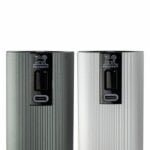It is well known that Ceaușescu had put Romania into debt. But after the liquidation of the two trillion lei foreign debt, the former dictator had plans to turn Romania into a real economic force and more.
In this regard, Playtech has consulted the document entitled “Programme – directive on the economic and social development of Romania in the five-year period 1991-1995 and the guidelines for prospects until 2000-2010”, i.e. the country project presented by Nicolae Ceaușescu at the XIVth Congress of the Romanian Communist Party, which you can analyse in full HERE.
After analysing the 49-page document, published in 1989, I have drawn some conclusions. This is what Romania would have looked like if the 1989 Revolution had not taken place.
First of all, the document mentions that Romania would have become an economic force: “the strong growth of the productive forces, by applying the latest conquests of the techno-scientific revolution”. The Romanian Communist Party approximated that industrial production would double between 2005 and 2010 compared to 1990. Emphasis was placed on the hydro-energy potential and on the operation of hydro-nuclear power plants at maximum parameters.
Moreover, by increasing the efficiency of economic activity, according to the document, a rapid increase in national income (Gross Domestic Product) would follow, which was expected to double by 2005.
Until recently, Romania was the breadbasket of Europe, managing to be the export leader on the old continent. In the agricultural sector, Ceaușescu envisaged a stable harvest of 40-45 million tonnes of cereals per year (in 2000-2005), which was to be achieved by “developing all possible land for irrigation”.

Ceaușescu wanted to make Romania an economic force
In the field of science, the late Elena Ceaușescu, who had great ambitions, was responsible. The PCR and Comrade Elena wanted to start “studying the structure of matter, genetic engineering, the biosphere, the world ocean, the earth’s crust and outer space”.
As for pollution and the environment, the late Ceușescu had big plans, too: he wanted to invest in the railways and shipping.
“Transport by car should be reduced to a minimum, both to reduce the consumption of superior fuels and as an important measure to prevent pollution and protect the environment,” the document under review states.
In addition, from the former Communist Party document, we also learn that the former dictator addressed a popular theme today: reducing the work week. So, after paying off the foreign national debt, Ceaușescu planned to “strengthen the national currency” and create the conditions for making the leu an international currency. The Romanian head of state also wanted “the introduction of new technology and the increase in labour productivity to create the conditions for reducing the working week within rational limits”. It should be noted that in 1989, the working week was six days.
Ceaușescu and his party therefore had big plans for our country. As far as Romania’s development in the five-year period 1991-1995 is concerned, you can see in the photo below, from the document, how the situation looked like.

The document also states that in the five-year period 1991-1995, the Romanian state was to invest 250 billion lei for the construction of housing and social-cultural buildings.
Nicolae Ceausescu did not want Romanians to own cars and wanted to limit road transport as much as possible, in the idea that this would help to improve pollution. The machine-building industry was to be geared towards providing the necessary machinery and making high-efficiency heat engines for industry and fuel-efficient cars.
As for the electrical engineering industry, “the manufacture of electric motors, transformers and electrical switchgear is to be standardised, working to increase the competitiveness of products, sharply reduce the consumption of non-ferrous metals and replace expensive materials”, according to the same document.
All the measures Nicolae Ceaușescu had in mind for post-december Romania, including education, trade, salaries, nuclear power, etc. can be found in the document cited at the beginning of this article.

 Renault’s compact family SUV will be called the Symbioz -.
Renault’s compact family SUV will be called the Symbioz -. Peugeot and its new range of salt and pepper mills -.
Peugeot and its new range of salt and pepper mills -. A new Uber Eats ad is being criticized for showing a peanut allergy -.
A new Uber Eats ad is being criticized for showing a peanut allergy -. Pagani announces new track-based hypercar, known as the Huayra R Evo -.
Pagani announces new track-based hypercar, known as the Huayra R Evo -. Introducing the Oscars in the Best Casting category -.
Introducing the Oscars in the Best Casting category -.